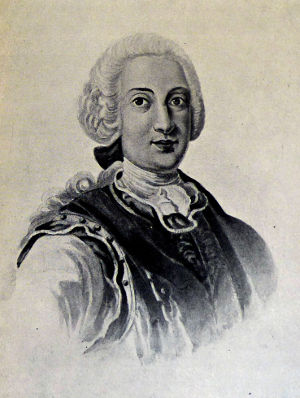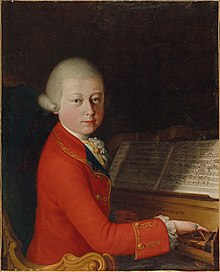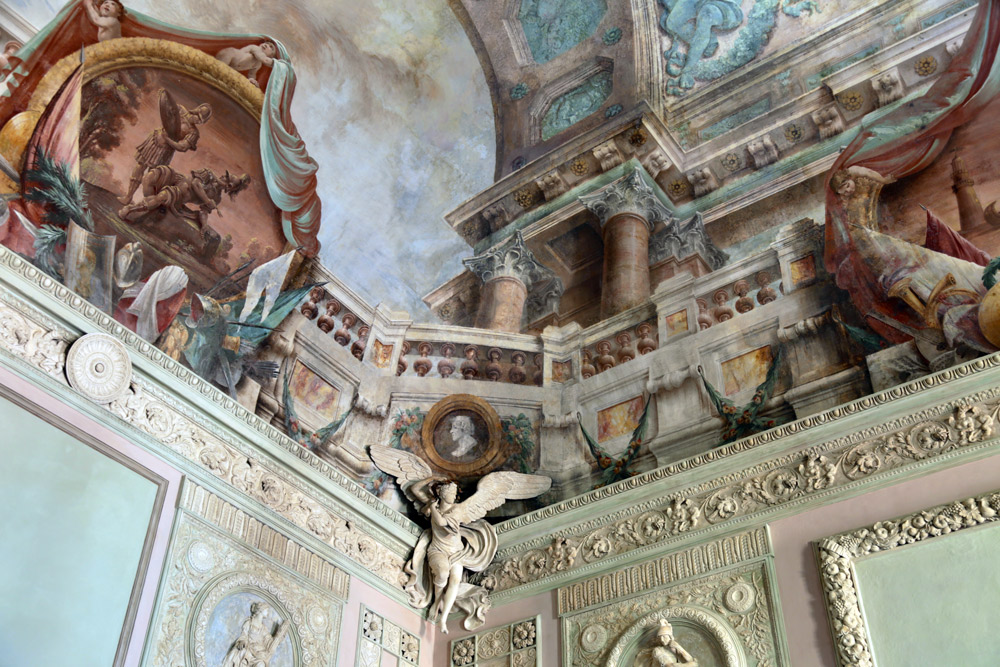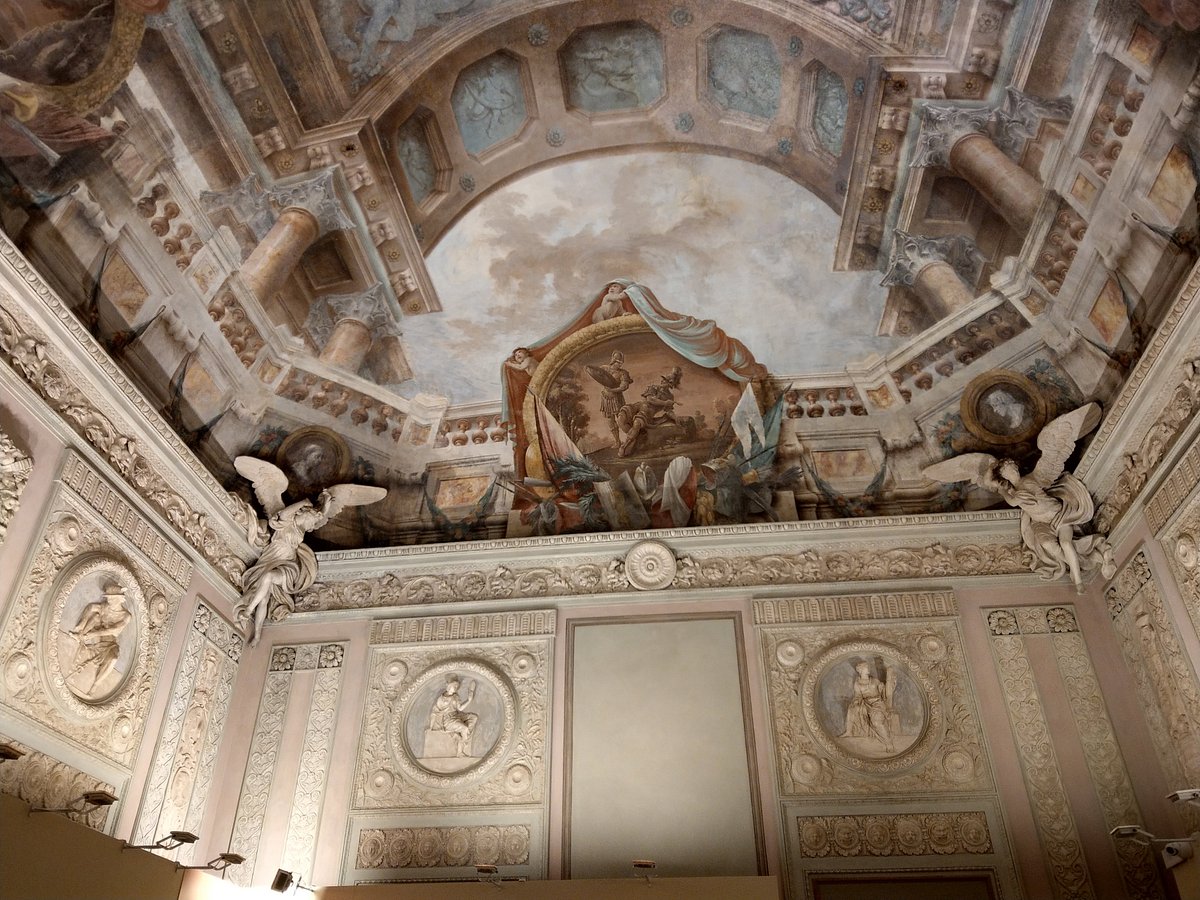palazzo like you've never seen it before
The origins of Palazzo
Palazzo Pallavicini traces its origins back to 15th-century Bologna, when, under the rule of the Bentivoglio family, it was owned by the Sala family (1493). Over time, it passed to the Volta, Marsili, and Isolani families, who, in 1680, decided to renovate it in the style of senatorial architecture, as documented by Guidicini.
For this task, was chosen the architect Paolo Canali. He designed and executed the monumental staircase and the grand hall with a lantern ceiling, which is the tallest in the city along with the one in Palazzo Ranuzzi. In 1690, the rooms were beautifully adorned with paintings by Giovanni Antonio Burrini, bestowing upon the palace an unparalleled aura of magnificence.

The Arrival of Marshal Count Pallavicini
For its prestige, the palace was chosen as a residence by Marshal Gian Luca Pallavicini (Genoa, 1697–1773), a military leader and minister in the empire of Charles VI of Austria and his daughter, Empress Maria Theresa of Austria, mother of Queen Marie Antoinette of France, who was executed during the French Revolution.


The count arrived in Emilia-Romagna in the mid-18th century, eager to find a setting where he could recreate the grandeur of his years at the Royal Palace as Viceroy of Milan. The opportunity arose in 1765 when Senator Ferdinando Bolognetti, then owner of the palace on Via San Felice, moved to Rome and put it up for rent.
Under Pallavicini’s guidance, the building became the center of a European court, offering an environment worthy of a royal palace. The Genoese noble established relations with international diplomacy, organized lavish parties and banquets, hosted concerts, and welcomed crowned heads. A memorable event was the procession along the grand staircase in 1764 during the “Entrata del Gonfalonierato” of Senator Davia, “Peer of Scotland” and Chamberlain to the Duke of Modena. On that occasion, the most prominent figures of the time ascended the monumental staircase amid lit torches and melodies to celebrate the Senator, providing a spectacle unmatched in the city.
Mozart at Palazzo
In the sumptuous setting of the Burrini Hall, beautifully decorated for the occasion, a memorable event took place on the evening of March 26, 1770. The fourteen-year-old Wolfgang Amadeus Mozart, staying with his father at the Marshal Count’s residence, performed in front of seventy local ladies and the European high nobility. Among the distinguished guests were Count Giuseppe di Kaunitz Rittberg, and the princes of Holstein and Saxon Gotha, who were welcomed alongside Bologna’s nobility and religious authorities, including Archbishop Vincenzo Malvezzi, Cardinal Legate Antonio Colonna Branciforte, and Monsignor Ignazio Boncompagni Ludovisi.
Proud of the event, the count wrote to Minister Firmian on March 28, recounting the exceptional evening: “On Monday evening at my home, a gathering was held with 70 ladies, attended by His Eminence the Cardinal Legate, the Princes of Holstein, and much of the nobility. The young maestro demonstrated such extraordinary abilities that, given his youth, they would seem incredible to those who have not witnessed them…”


The Mozarts, arriving from Salzburg with their father Leopold on March 24, were hosted by Gian Luca Pallavicini, a refined connoisseur who seized the opportunity. The Mozart family was a guest multiple times: in March at Via San Felice, during the summer at the Villa della Croce del Biacco, and again in the fall at the city palazzo, where it is likely that the antiphons “Cibavit eos” and “Quaerite primum regnum Dei,” as well as the Minuet in E-flat Major K. 94, were composed.
During their stay at Palazzo, the young Salzburg musician had the opportunity to meet luminaries of European music, including Misliveček, Vanhalle, Farinelli, and the musicologist Charles Burney, who noted: “I met the famous young German at the palace of Prince Pallavicini.” In particular, he interacted with Padre Martini, whose stay at Via San Felice revitalized the city’s musical landscape. As M. Oretti recounts: “At the Pallavicini… numerous musicians performed enchanting symphonies on the terrace.
European Court in the heart of Bologna
In the sumptuous rooms of the Pallavicini residence, pages of international history were written, and significant diplomatic relations were woven. It was here that the key figures of the era passed through: in 1768, Bologna saw the young Princess Maria Carolina of Austria, escorted to Naples by the marshal to meet her future spouse, Ferdinand of Bourbon. The marshal also hosted notable guests such as Grand Duke Pietro Leopoldo of Tuscany, accompanied by his wife Maria Luisa of Bourbon-Spain, and in 1769, Emperor Joseph II of Austria. During his journey to Rome on diplomatic business with the Holy See, the Emperor stayed on Via San Felice on March 13 and 14, 1769, enjoying chamber music concerts performed by Giuseppe, the son of Gian Luca, who again played the harpsichord in 1771 for a musical “divertimento” in honor of the Princes of Holstein and Saxon Gotha.
A friend of the Pallavicini family, the renowned Farinelli contributed to these evenings, delighting the distinguished guests and turning the palace into a venue for celebrations worthy of a European court.


A memorable event was the race of the “barbarian horses” along Via San Felice on the occasion of Archduke Maximilian’s arrival in 1775.
The presence of an Austrian regiment stationed on Via del Pratello, the presence of German servants, and the acquisition of Lipizzaner horses by Count Giuseppe highlight the palace’s international significance, as well as its sumptuous decorations.
Unique in the world is the fresco depicting Empress Maria Theresa of Austria as Cybele, Mother of All Peoples. Painted on the ceiling of a room on the main floor between 1791 and 1792 by the Bolognese artist Pietro Fabbri, this extraordinary work is not found in Austria or the empire’s territories but is exceptionally located in Bologna. This fresco was painted in the same year that Maria Antonietta, the Empress’s daughter, languished in the Temple prison in Paris.
The years of Giuseppe Pallavicini
After coming of age and acquiring ownership of the building, Giuseppe Pallavicini (1756–1818) embarked on new construction projects, extensively documented thanks to the rich collection of documents preserved in the family archives. Educated to a level comparable to that of a sovereign, the young count had received lessons from Carlo Bianconi, known for his connections with intellectuals such as Algarotti and Giovanni Gioachino Winckelmann, who instilled in him a deep passion for antiquity.
Determined to transform the palace on Via San Felice into a high-level neoclassical masterpiece, Giuseppe Pallavicini saw an opportunity in 1776, when he began discussions about marriage with Carlotta Fibbia.


He thus engaged the most brilliant minds in art of his time: architect Raimondo Compagnini, sculptor Giacomo Rossi, quadraturist David Zanotti, and others, including painters Filippo Pedrini and Giuseppe Antonio Valliani.
The stucco decorations created by Giacomo Rossi on the walls of the opulent “Camerone” and “Conviti” rooms, featuring a repertoire of Greek-style candelabras, were unprecedented in their magnificence and extent. The pictorial decoration involved a team of talented artists, including Giuseppe Antonio Valliani, Emilio Manfredi, and Francesco Sardelli, whose work reflected a strong interest in antiquity.
The Bolognese painter Filippo Pedrini, renowned for his works set in the landscapes of Vincenzo Martinelli, contributed two ceilings that celebrated the mercantile origins of the Pallavicini family. Serafino Barozzi painted the floral garlands that adorned the walls of the “Conviti” hall, echoing the decorations created for Catherine the Great at the Oranienbaum summer residence, thus highlighting the international influence of the works at Palazzo Pallavicini.
The artistic journey in the neoclassical renovations of Palazzo Pallavicini continued with the construction of the library, designed to house the eighteen thousand volumes of Count Gian Luca. Here, once again, a unique element in Bolognese art is found: the fresco on the dome of the room, dated 1792 and signed by the quadraturist Flaminio Minozzi, represents a rare event in art history.
